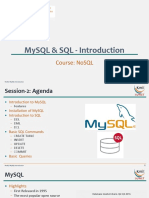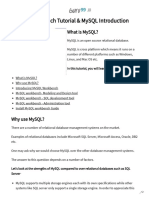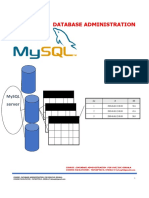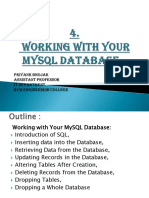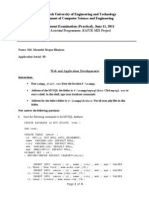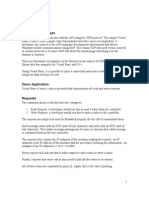100% found this document useful (1 vote)
292 views89 pagesIntro A MySQL
This document provides an introduction to MySQL, including:
- An overview of MySQL's history, products, features, architecture, community, and customers.
- Descriptions of MySQL installation, connecting and disconnecting from MySQL using the mysql client, and entering basic queries.
- Information on MySQL Workbench and its features for visual database modeling, documentation, and change management.
Uploaded by
Shanika JayasekaraCopyright
© © All Rights Reserved
We take content rights seriously. If you suspect this is your content, claim it here.
Available Formats
Download as PDF, TXT or read online on Scribd
100% found this document useful (1 vote)
292 views89 pagesIntro A MySQL
This document provides an introduction to MySQL, including:
- An overview of MySQL's history, products, features, architecture, community, and customers.
- Descriptions of MySQL installation, connecting and disconnecting from MySQL using the mysql client, and entering basic queries.
- Information on MySQL Workbench and its features for visual database modeling, documentation, and change management.
Uploaded by
Shanika JayasekaraCopyright
© © All Rights Reserved
We take content rights seriously. If you suspect this is your content, claim it here.
Available Formats
Download as PDF, TXT or read online on Scribd
/ 89





